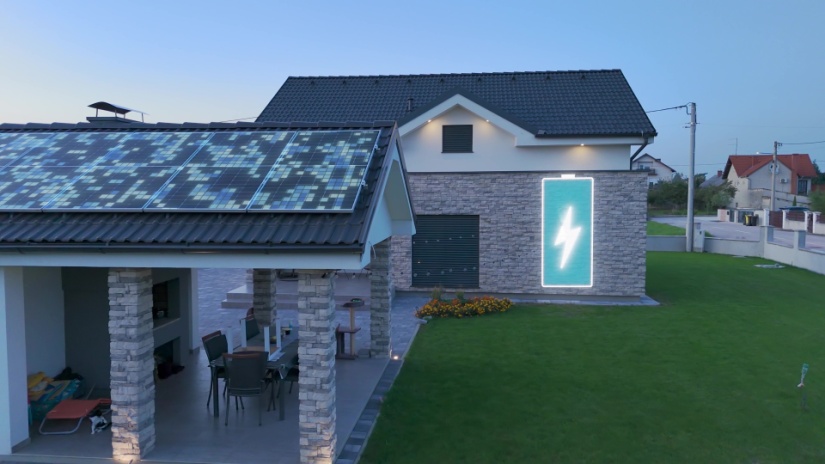Australia’s big battery boom: Who’s funding it and who benefits?

Over the past few years, Australia has seen rapid growth in large‑scale battery energy storage (BESS). Projects are being financed, approved, and commissioned at increasing speed. Several factors are driving this surge:
- Coal plant retirements are creating demand for reliable grid firming and backup supply.
- Renewable energy generation (solar, wind) is expanding, but its variability creates a need for storage to smooth supply and meet peak demand.
- Strong policy signals and government incentives (such as capacity investment schemes, transmission priority projects) are improving the investment environment for batteries.
- Investors are seeing solid returns: declining battery manufacturing and installation costs, rising electricity price volatility, and multiple revenue streams (energy arbitrage, grid services, frequency control, etc.).
Key projects and where they stand
Some of the headline battery and storage projects give a picture of scale, funding sources, and potential beneficiaries:
| Project | Size/Specs | Key investors/Developers | Expected benefits/Uses |
| Victorian Big Battery (Geelong, VIC) | 450 MWh storage, 300 MW capacity | Owned by HMC Capital; built by Neoen; part‑funded by Clean Energy Finance Corporation (government green bank) | Provides grid stability, helps manage peak demand and supports more renewables in Victoria |
| Hornsdale Power Reserve (SA) | ~150 MW / ~194 MWh (after expansion) | Neoen; originally developer was Tesla for build‑out | Proven reliability: frequency control, reducing outages and helping reduce costs for consumers; acts as a benchmark for battery performance |
| Wooreen battery system (Victoria) | 350 MW, ~1.4 GWh output | Reached financial close in Q1 2025 under federal support mechanisms and private investment interest | Expected to help with energy price volatility, storing excess renewables, and supporting demand spikes |
| Australia‑Asia PowerLink (Northern Territory/export scale project) | Proposed 36‑42 GWh battery + very large solar farm | Developed by Sun Cable (with backing originally from high‑net worth investors like Andrew Forrest, Mike Cannon‑Brookes) | Aims to serve export markets (Singapore / Asia), to stabilise supply in remote zones, and showcase very large scale storage potential |
Who’s putting up the money?
The funding and investment landscape for big batteries is diverse:
- Private developers and utilities. A large share of capacity in the pipeline is being developed by private companies. Many projects are moving forward without large direct government contracts.
- Government funding/public institutions
- State and federal governments are providing grants, subsidies, or loans to support feasibility, land, environmental approvals, or grid upgrades.
- Green banks or government finance agencies help to reduce investment risk. Example: Clean Energy Finance Corporation backing of Victorian Big Battery.
- Institutional investors/international capital. Pension funds, superannuation funds, and large asset managers are increasingly seeing battery storage as a stable, long‑term investment with predictable cash flows.
- Hybrid investment models. Many projects combine government support + private capital + off‑takers (companies or government entities that commit to buying power or services). These hybrid models help de‑risk upfront investment, especially for transmission, permitting, or first‑mover costs.
Economics: How the money stacks up
What makes these big batteries financially or economically viable:
- Falling costs of battery technology: Cost per kWh for large lithium‑ion batteries has been falling. This improves project returns.
- Multiple revenue streams:
- Energy arbitrage (buying/charging when electricity is cheap, discharging when expensive)
- Grid services (frequency control, voltage support, etc.)
- Capacity payments or being eligible under schemes that reward firm capacity or reliability.
- Government incentives & policy certainty: Policies like capacity investment schemes, priority project lists, renewable energy zones, etc., help reduce risk. Projects that are aligned with state or federal clean energy goals tend to have smoother pathways.
- Demand side of the equation: As demand‑side pressures (peak usage, EV charging, electrification of heating/cooling) rise, value for storage increases. Projects that can respond to peaks are more profitable.
- Estimates show that many 4‑hour battery projects have internal rates of return (IRR) in the order of 13‑15% under current forecasts, especially when price volatility is high and with supportive policy.
Who benefits - and who controls
Beneficiaries
- Consumers (households & businesses). Reduced electricity prices in times of peak stress, fewer price spikes, better reliability, fewer blackouts or supply disruptions.
- Grid operators/governments. Battery projects help in stabilising grids, reducing need for expensive gas plants or overbuild, and help meet renewable energy targets.
- Local regions & job creation. Construction, operations, and related infrastructure generate jobs. Local economic activity, especially in areas where projects are sited, can benefit.
- Investors. Entities with capital, including clean energy firms, institutional investors, super funds, are getting returns from stable, regulated revenue streams plus upside from energy markets.
Controllers and power dynamics
- Major renewable energy developers (Neoen, Sun Cable, etc.) dominate many of the large battery pipelines. They often own, build, and operate these assets.
- Governments and regulatory bodies (state and federal) play a strong role in permitting, providing incentives, and determining market rules. They influence which projects get priority, where transmission infrastructure is built, etc.
- Off‑takers and power purchasers (energy retailers, large industrial users) that enter long‑term contracts get some control of the output (especially in hybrid projects).
In many cases, large battery projects are financed through consortia of private firms, institutional investors, sometimes supported by government grants or loans - meaning control is shared.
Challenges and caveats
Even with the boom, several challenges remain:
- Permitting, land, and community opposition can slow down projects. Even well‑funded plans can be delayed by regulatory, environmental or local stakeholder hurdles.
- Transmission and grid integration: Batteries need to be sited where they can deliver. If transmission lines aren’t upgraded, or if grid constraints exist, much capacity may sit idle or under‑utilised.
- Duration of storage: Many batteries are 24‑hour systems. For long periods of low renewable generation, longer duration storage (pumped hydro, other techs) are necessary.
- Technology risks & battery life: Degradation, replacement costs; ensuring expected performance over decades.
- Financing risks: Cost overruns, interest rates, supply chain for battery components (lithium, etc.), import/export constraints, etc.
Outlook: What’s likely next
- The battery pipeline is large: estimates show ~16‑17 GW in the NEM pipeline, with a significant portion expected to come online by end of 2027, though not all projects will reach completion.
- As coal retires and renewable energy scales, battery storage will become an increasingly central part of Australia’s energy grid.
- Policy clarity, streamlined approvals, and investment in transmission will be major levers.
- Long‑duration storage will likely increase in importance (beyond 4‑hour batteries), especially as more battery projects saturate short‑term markets.
Ready to power up your savings?
To maximise the benefits, Australia will need to continue improving policy clarity, building transmission, and ensuring diversity in storage duration. Only then will we fully realise the promise of batteries to support the clean, reliable, affordable energy future.
As large-scale batteries reshape Australia’s energy market, the benefits are flowing through to homes and businesses with smarter, more flexible electricity pricing.
Call Compare Energy on 1300 790 106 to find out if your current plan stacks up - or if you could switch to a better deal. Our experts compare top retailers and help you choose the right plan, fast.
Don't pay more than you need to - get energy-smart today

